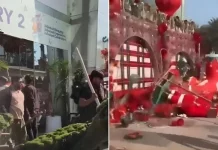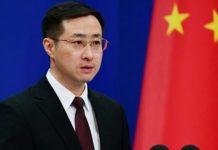DM Monitoring
And in 1999, the Vajpayee government came to power with a coalition of more than 20 parties for a full five-year term.
Lessons from the BJP’s rise
The BJP could convert its Hindutva surge under Advani into an NDA majority only under Vajpayee.
The reason: allies having Muslim voters needed a moderate face to rationalise their support for the BJP, made largely for power.
This led to the BJP acquiring a two-pronged leadership: Vajpayee as the acceptable face and Advani as the hardliner. But the acceptable face alone could bring it to power. In other words, Hindutva’s surge also, paradoxically, meant its dilution.
Advani could not fit into Vajpayee’s shoes despite attempts at moderation and the BJP could not return to power under him in 2009. Now, the Congress seemed to be well-placed, with two consecutive victories under Sonia Gandhi in 2004 and 2009.
However, the UPA was hit by corruption charges in its second term. Social activist Anna Hazare led public protests in the capital, undermining the legitimacy of the central government. Adverse CAG reports did the same, and the media stayed critical of the government.
The vacuum and Modi’s rise
The vacuum thus created had to be filled by someone. In this case, it was filled not by the BJP but one man, Narendra Modi, whose public oratory and PR machinery made him seem like a saviour when everything was chaotic. His Hindutva image acquired a new layer – the transformative, no-nonsense leader.
This new BJP rode to power on the populist promise of a new India and all moderation was a thing of the past. Regional parties were willing to work with a BJP with no moderate face in a position of prominence. The 2019 victory was a re-affirmation that public mood now demanded hyper-nationalist rhetoric with Muslims as the thinly-veiled other.
It is this shift that has brought Hindutva to the core like never before. The second Modi government is all about a hard line on Kashmir and about the CAA, which many see as discriminatory towards Muslims.
Protests in every corner of India have been in news over the past few months. And Delhi has now seen the worst riots since 1984, as mobs attacked Muslim localities after a provocative speech by BJP leader Kapil Mishra.
The police are being seen as lax in containing the violence, which has led to about 40 deaths till now and global bad press.
This is the high-point of Hindutva, where cultural polarisation is the politics of the day. There is no alternative voice within the BJP for any other shade of national opinion.
The project of Hindutva never had it so good. Unfortunately, harmony never had it so bad.–Concluded




